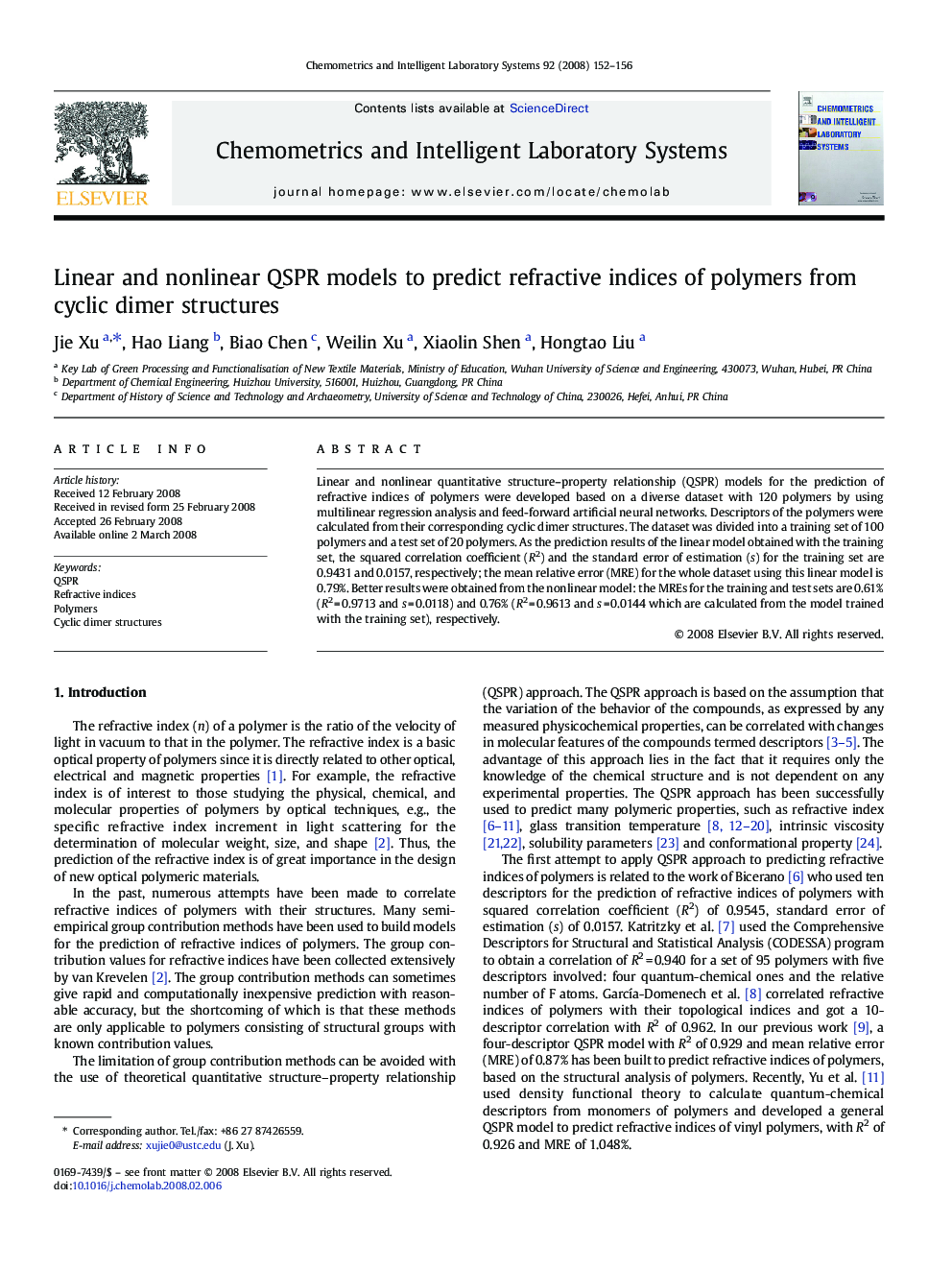| کد مقاله | کد نشریه | سال انتشار | مقاله انگلیسی | نسخه تمام متن |
|---|---|---|---|---|
| 1181314 | 962924 | 2008 | 5 صفحه PDF | دانلود رایگان |

Linear and nonlinear quantitative structure–property relationship (QSPR) models for the prediction of refractive indices of polymers were developed based on a diverse dataset with 120 polymers by using multilinear regression analysis and feed-forward artificial neural networks. Descriptors of the polymers were calculated from their corresponding cyclic dimer structures. The dataset was divided into a training set of 100 polymers and a test set of 20 polymers. As the prediction results of the linear model obtained with the training set, the squared correlation coefficient (R2) and the standard error of estimation (s) for the training set are 0.9431 and 0.0157, respectively; the mean relative error (MRE) for the whole dataset using this linear model is 0.79%. Better results were obtained from the nonlinear model: the MREs for the training and test sets are 0.61% (R2 = 0.9713 and s = 0.0118) and 0.76% (R2 = 0.9613 and s = 0.0144 which are calculated from the model trained with the training set), respectively.
Journal: Chemometrics and Intelligent Laboratory Systems - Volume 92, Issue 2, 15 July 2008, Pages 152–156